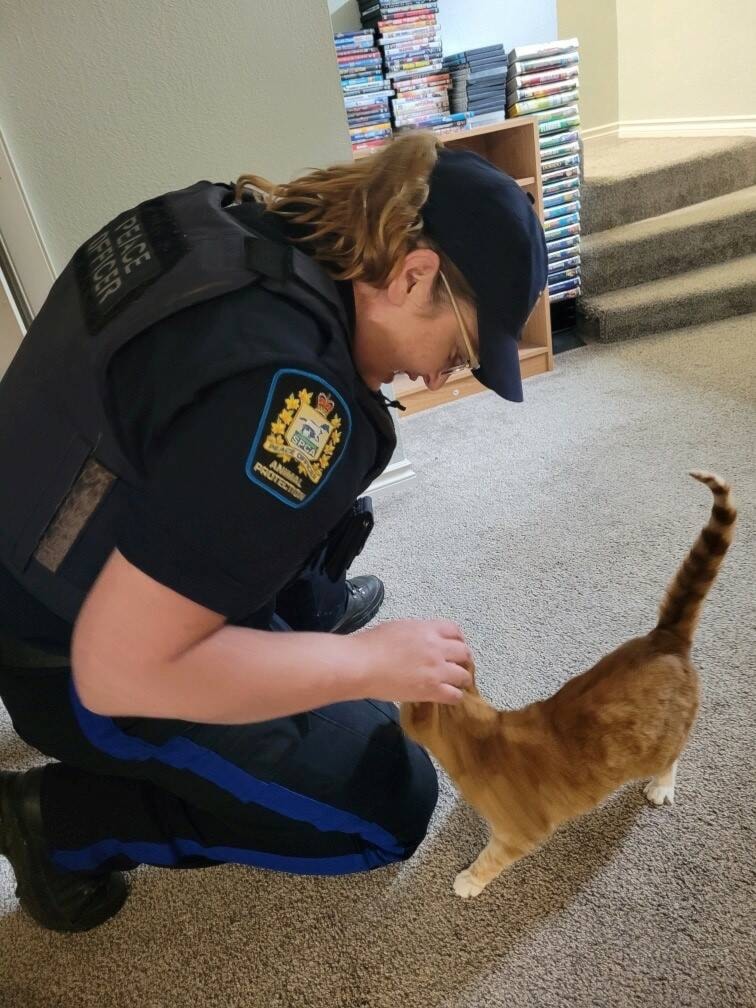Alberta SPCA is already concerned about the supply of winter feed for livestock.
Doug Sawyer, SPCA president and board chair, said feed is already in short supply, and producers are not getting much of a first cut of hay due to early drought conditions.
“We’ve got, thankfully, some pretty good rains as of late, but we’re not going to be able to catch up on our feed stock so we’re keeping a close eye on pastures and animals out there and the water quality,” said the Pine Lake area rancher Doug Sawyer who became the board of director’s chair and president in the spring.
He said Alberta SPCA endeavours to identify future animal welfare issues months in advance.
“Generally speaking we always are (preparing) because there’s always somewhere in Alberta where there’s a drought, or flood, or fire. You have to be aware of where they are so you’ve got the right staff in the right place, at the right time.”
In May, the SPCA jumped into action to assist when wildfire season came early and forced many Albertans out of their homes and communities.
Sawyer first joined the SPCA board in 2014, but has been looking out for livestock and working with the SPCA for years as a board member or chair of Alberta Farm Animal Care Association and Alberta Beef Producers.
With over 20 years of experience in the livestock industry, he has an extensive background in engaging and collaborating with a wide range of stakeholders.
Sawyer said the core of the SPCA’s work is enforcing the Animal Protection Act with peace officers funded by government.
In 2022, the SPCA initiated 2,548 investigations, a 15 per cent increase over the previous four-year average. Complaints involving dogs and cats saw the biggest hikes at 28 per cent and 25 per cent respectively. Seven investigations led to charges in 2022.
“It’s not an easy job, but it’s a vitally important job,” Sawyer said.
Public education, prevention and working with industry partners also remains an important focus for the SPCA and has improved the welfare of animals in Alberta. For example, reminding people not to leave their pets in vehicles in the summer has sunk in, a message that media has helped to promote, he said.
“We’re seeing less and less heat-related issues in vehicles all the time. That number just continually drops because of the education and awareness. It’s really shown that people do listen.”
As wildfires continue, the Alberta SPCA wants Albertans to continue to be prepared for emergencies.
The organization recommends pet owners always have an emergency kit with three to seven days of food, bottled water, two-week supply of medications, copy of pet’s medical records and vaccinations (in water proof container), food and water dishes, extra leash and harness, kitty litter and tray, pet carrier or kennel, extra toys/blankets.
When people are forced to evacuate without their pets, it is easier to reunite families with their pets if they have veterinarian records, recent pet photos and up-to-date ID (tattoo or microchip). People should have pets licenced so their information is on record with their municipality. Also ensure pets have an ID tag on their collar with their name, phone number, and any urgent medical needs.
Evacuation plans should also be prepared for livestock.
szielinski@reddeeradvocate.com
Like us on Facebook and follow us on Twitter
